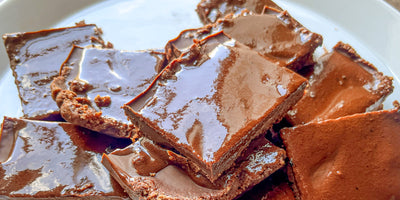As most of you probably know, cacao is the crop from which cocoa and chocolate are made. Starting around 2000, labor abuses in the cocoa industry was brought to the public's attention. Poverty wages, unsafe working conditions, gender inequality, the worst forms of child labor—even modern-day slavery, and farming practices that damaged the environment were common.

What is Fair Trade?
Fair Trade is defined as a global movement made up of a diverse network of producers, companies, consumers, advocates, and organizations putting people and planet first. Based on the simple idea that the products bought and sold every day are connected to the livelihoods of others, Fair Trade is a way to make a conscious choice for a better world.
What is Fair Trade Chocolate?
Fair Trade Chocolate addresses the issues of child labor, farmer poverty, and environmental degradation that are prevalent in conventional chocolate production.
Chocolate products go through a lengthy process to earn the Fair Trade Certified label. Producers and businesses adhere to strict labor, environmental, and ethics standards that prohibit slavery and child labor and ensure cocoa growers receive a steady income, regardless of volatile market prices. Fair Trade Chocolate ensures equitable trade practices, promotes sustainable farming methods and improves the living conditions of cacao farmers.

How does Fair Trade Chocolate help farmers?
Fair Trade Chocolate is made with cacao beans from farmers who are paid a fair price for their crop, instead of the low price set by the market. This allows farmers to lift themselves out of poverty and build a better life for their families. It also ensures workers harvesting the beans are paid fairly and are treated ethically.
Via specific programs and standards criteria, Fair Trade works with farmers to adapt to unpredictable weather patterns, mitigate environmental risks, and build a more resilient cocoa industry.
Why is Fair Trade Chocolate more expensive?
Fair Trade Chocolate often costs more because it reflects the true cost of ethical production. This includes paying fair wages to farmers, investing in community development, implementing sustainable farming practices, and eschewing terrible practices like slavery. Organic production is incentivized with a higher Minimum Price. Farmers also receive the Fair Trade Premium, which they choose how to invest, for example replacing old cocoa trees and investing in better facilities for crop collection, storage and transport, or processing.
Chocolate shouldn’t be cheap. It should be fairly produced, and delicious!
Does Fair Trade really make a difference?
Simply put, Fair Trade makes the world a better place. People are at the heart of Fair Trade. There are over 1.9 million farmers and workers across more than 71 countries participating in Fair Trade. When you treat farmers and workers fairly, everyone benefits. Fair Trade helps businesses source products that are ethically and sustainably produced while giving consumers confidence that the people behind the products they buy get a fair deal for their hard work.
Environmental Impact
In order to obtain fair trade certification, cocoa producer companies are required to follow fair trade environmental standards. On a case by case basis, the environmental impacts of a cocoa farmer's operations is assessed, plans designed to mitigate those impacts are developed, and the implementation of those plans are monitored. Although the environmental standards for fair trade certification vary by organization, they all include sustainable irrigation practices, crop rotation, reducing carbon emissions, improving biodiversity, prohibiting GMO crops, safe use of only legal pesticides (the pesticides used by conventional cocoa farming are some of the most harmful pesticides used in agriculture) and proper hazardous waste disposal.
Individual Decisions Matter
Americans love chocolate and other products made with cocoa — it's part of our daily lives. At the same time, many people do not know how arduous cocoa farming is, nor do they know the impact of choosing one chocolate bar over another. By choosing chocolate with the Fair Trade Ceritified logo®, you are standing up for the people and places involved in the cocoa industry. Opt out of chocolate produced by an unfair system and switch to fair trade chocolate that’s traceable, so you can feel confident about the conditions under which it was produced.

What about Wild West Chocolate?
We currently source the majority of our cacao, partnering with organizations and farmers in South America, specifically in the Amazon rainforest area. We work only with democratically organized groups that are part of the fair trade movement and have the vision of improving the lives of farmers and their communities. We visit our partners, with whom we’ve established personal relationships. They are cooperative of farmers who are proud of their work and want to sell organic cacao for delicious chocolate through a fair system. Wild West products have full traceability back to our farmer partners, and guarantees a minimum price to the cooperatives and pays higher prices for the work that goes into organic cocoa production.
Fair Trade Chocolate Facts
-
35 million pounds of Fair Trade Certified cocoa are imported from around the world annually, predominantly from the Ivory Coast, Peru, Dominican Republic, and Ecuador.
-
Through your purchase of Fair Trade Certified chocolate, millions of dollars have been invested back into cocoa producer communities, resulting in life-transforming projects, such as building schools in the Ivory Coast and improving access to education. The rate of child labor in cocoa growing communities is significantly lower when the quality of education is higher.
-
Cocoa farmers earned more than $3.2 million in Community Development Funds within the span of one year.
(sourced from https://www.fairtradecertified.org/)
 Bars
Bars
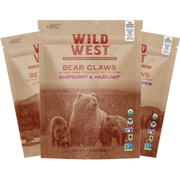 Bear Claws
Bear Claws
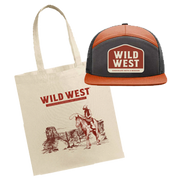 Merch
Merch
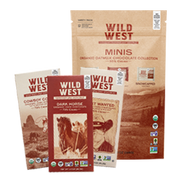 Variety Packs
Variety Packs
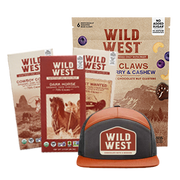 Shop All
Shop All
 Our Story
Our Story
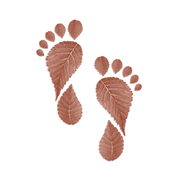 Sustainability
Sustainability
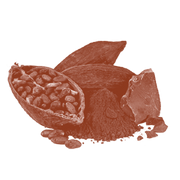 Ingredients & Certifications
Ingredients & Certifications
 Artist Collaborations
Artist Collaborations
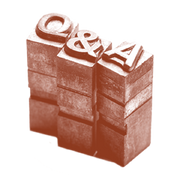 FAQs
FAQs




